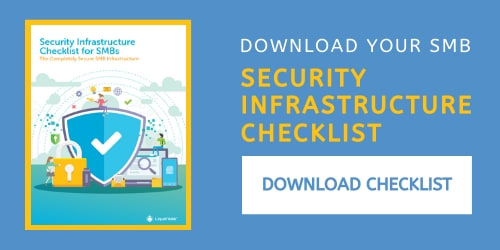
As we are seeing with the current pandemic of the coronavirus (COVID-19), a new resurgence of telecommuting, also known as working remotely, is also on the rise.
The coronavirus is reshaping how organizations and businesses are continuing to do business on a daily basis. Businesses are restructuring their processes to ensure services are uninterrupted and customers are served.
But how do you protect your employees while serving uninterrupted services to customers?
Most businesses are answering that question by having employees working remotely from home or other socially distant locations.
With the proliferation of smart technology, including smartphones, tablets, wearable devices, and the Internet of Things, people are more connected than ever, and more able than ever before in history, to complete their work remotely.”
And what better way to slow the outbreak than by continuing business operations at home, maintaining social distance, and retaining team environments through virtual meetings?
It sounds incredible, right?
But one question we have continued to receive over the past few weeks – “How do I continue keeping my data secure with an increasingly remote workforce?”
The Rise of Working Remotely and Data Security Considerations
While the fact that employees can connect from anywhere is a great strength of mobility, it is also its greatest weakness from a security standpoint.
When an employee works at the office, the data they access is protected by your security architecture. For a hacker to get their hands on that information, they will need to crack through several layers of security: firewalls, monitoring software, encryption, and so on.
Hackers have less layers of security to breach for employees working remotely. And right now many employees may be more vulnerable than ever, personally and professionally.
Think of the unending possibilities for stolen data:
- A stolen or misplaced phone during an emergency trip out of quarantine to get supplies.
- An unsecured wireless network used to access corporate files.
- A mobile application that leaks data to an external server (there are more of those than you might expect).
- Service fluctuations from a corporate supplier create issues with infrastructure or supply chain management.
These represent an extremely wide threat surface that you must protect.
And that threat surface is only going to get wider as the pandemic spreads.

5 Ways to Empower Remote Employees and Keep Data Secure
You need to enable your employees working remotely, while also securing your data. This will require the following:
1. Create and Manage a Remote Work Policy
You will need to create and manage a remote work policy. Think about the following:
- What devices are going to be accessing corporate data?
- Who will be using those devices?
It’s imperative that you set up device profiles for the major user groups within your organization, with permissions appropriate to each group. A member of your IT staff, for example, will likely need access to your entire infrastructure, while someone who works in HR will only require personnel records.
Next, this company-wide policy should determine what percentage of your staff can work remotely. This percentage will need to be flexible for emergency situations like now.
Finally, it should also establish performance expectations, best practices for security, and a plan of action for when something goes wrong. And make sure to share it with employees in several highly visible places, such as Slack channels, email, or the corporate intranet.
2. VPN Access
As has already been established, you cannot trust public Wi-Fi when it comes to your business’s data. Equipping your employees with a VPN that will let them securely access corporate resources independent of location is critical.
Liquid Web provides a powerful VPN service that’ll help you easily do just that.
3. Remote Workspaces
Give your employees guidance and resources on how to set up a remote workspace that is secure and lends toward productivity. Secure workspaces should not include sticky notes with passwords or contact information. Also, guide employees to keep cognizant of those around them.
4. Strong Password Policies
The number of users who use passwords such as “password” or “123456” is rather disheartening – and every single one of those users is a security risk. Implement policies for user passwords such as a combination of numbers, letters, and symbols, a minimum character count, and regular password updates.
You can also encourage the use of easy-to-remember phrases instead of nonsensical characters.
5. Endpoint Management Software
You need to put the power back in the hands of your IT department, and allow them to securely manage the devices used by your remote employees, as well as the applications and data accessed from those devices.
Read this guide on selecting the right endpoint management tool for your business for more details.
BONUS: Guest Wi-Fi
Not only should you secure your remote workers, but you also need to protect your internal network from remote devices. Creating a guest Wi-Fi provides employees, guests, and visiting customers with a way to connect to the Internet through their mobile devices and personal laptops – without connecting directly to your local network.
Stay Secure While Working Remotely
There are more employees working remotely than ever before, and this number is only going to increase as the pandemic outbreak widens in reach. It is your job to make sure that your remote employees are able to stay productive while keeping your data secure.
Get the complete Security Infrastructure Checklist for SMBs
[ad_2]
Source link


![Working Remotely [5 Data Security Considerations]](https://dealzclick.com/wp-content/uploads/2022/02/Xiaomi-Mi-10T-Pro-5G-Review.jpeg)
![Working Remotely [5 Data Security Considerations]](https://dealzclick.com/wp-content/uploads/2022/02/the-Man-Diet.jpg)



